Physics

In this blog, I will review my thoughts on the action of general relativity, how it is used for the field equations and equations of motion. There is much to consider, so perhaps this will create a means for discussing this deep subject.
The Action
It was Hilbert who wrote down the action of general relativity based on discussions with Einstein.
While this happens to be the first action published for general relativity, there are other actions available. In particular, there is the Palatini action which allows one to include non-integral spin matter fields. This is the…

Two months after the controversial BICEP2 announcement, The Washington Post writes « Big Bang backlash: BICEP2 discovery of gravity waves questioned by cosmologists » and National Geographic emphasizes « Big Bang Discovery Comes Under Fire. Rumors ripple about flaws in the discovery of gravitational waves in the big bang's aftermath ». Both articles refer to the blog post « Is BICEP wrong? » by Adam Falkowski in Résonaances. Science did the same in « Blockbuster Big Bang Result May Fizzle, Rumor Suggests », and also Nature in « Gravitational wave discovery faces scrutiny » reporting «…
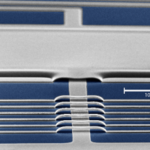
"Subatomic particles act in quantum ways—they have a wave-like nature—and so can atoms, and so can whole molecules since they're collections of atoms," Schwab says. "So the question then is: Can you make bigger and bigger objects behave in these weird wave-like ways? Why not? Right now we're just trying to figure out where the boundary of quantum physics is," says Keith Schwab, Professor of Applied Physics at Caltech.
And that means finding a way to make measurements that go beyond the limits of quantum physics.
Today, we are capable of measuring the position of an object with…

I receive much crackpot email. There is a very common misunderstanding often central, one I have not seen a good answer to anywhere. This is partially due to that few who write about physics counter
crackpot theories well. Allow me to explain this point with a new personal
story before explaining why energy seems quantized, why photons seem to be little
packets of energy rather than a concept that describes quantum interactions
more or less well.
Bad answers feed the perception of establishment conspiracy. I supplied many examples over the years. For yet another example:
Joy Christian’s…
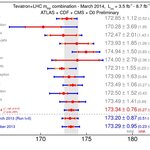
Very recently, a combination of the precise measurements of the mass of the top quark obtained by the CDF and DZERO experiments at the Fermilab Tevatron collider with those produced by the ATLAS and CMS experiments at the CERN LHC collider has been produced, obtaining a result of 173.34 GeV, which surprised nobody -of course- with a very small total error bar: 0.76 GeV, a mere 760 MeV, not even a proton's mass.
That result was known to be bound to be revised soon, as the business of measuring with as much precision as is possible the mass of the sixth quark is definitely not over yet. The…

"In the case where the dark matter particle is light (less than 1 GeV) and the interactions is either contact or mediated by light (but not massless) particles, there is parameter phase space that cannot be probed by current underground detectors even with substantially lowered energy thresholds. This region of the parameter space can be probed by shallow site detectors with low energy thresholds. However, since in this case dark matter particles will be very effectively stopped if coming upwards (i.e. below the detector), we argue that a search for a daily modulated dark matter signal is…
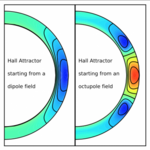
Neutron stars are extraordinarily dense stellar bodies created when massive stars collapse. They host the strongest magnetic fields in the universe -- as much as a billion times more powerful than any man-made electromagnet.
But some neutron stars are much more strongly magnetized than others and no one is sure why.
A paper by McGill University physicists Konstantinos Gourgouliatos and Andrew Cumming
in Physical Review Letters sheds new light on the expected geometry of the magnetic field in neutron stars and could help scientists measure the mass and radius of these unusual stellar…
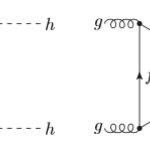
This must be the boosted b-jets season... Just a few days ago I discussed here the nice new observation of boosted Z->bb decays pulled off by the ATLAS collaboration using 8-TeV proton-proton collisions recorded in 2012. And today I am pleased to see in the Arxiv a new study by D. Ferreira de Lima, A. Papaefstathiou, and M. Spannowsky on the possibility to measure the pair production of Higgs bosons in their decay to two pairs of b-quark jets.
While the properties of the new scalar particle discovered in 2012 by ATLAS and CMS have already started to be measured with an accuracy which…
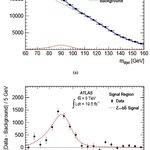
I was delighted today, as I checked the page of public ATLAS results, to find a very beautiful new result. The signal ATLAS found and just published on the arxiv is not one anybody could doubt to be there: no surprise whatsoever. And yet, it is a difficult one to extract, and one on which I myself have spent several years of my research work on the CDF experiment.
The signal is the decay of the Z boson into pairs of b-quarks. The Z boson decays that way 15% of the time, and 55% more into other quark-antiquark pairs. B quarks are different from all others in that they can be distinguished by…

A rare opportunity, a look behind the curtains of "scientific peer review" corrupting science; moreover, revealing sniffs of
the swamp that is the established community publishing on memristors - another case of hype in science, but the implications are general and can be only
more severe with issues where more money than Hewlett Packard’s is involved, or powerful political interests such as with global warming.
Two reviewer’s
reject a draft (NOT my draft and I do NOT know the authors). They reject for different, mutually inconsistent reasons,
out of pure self-interest. The science is not…